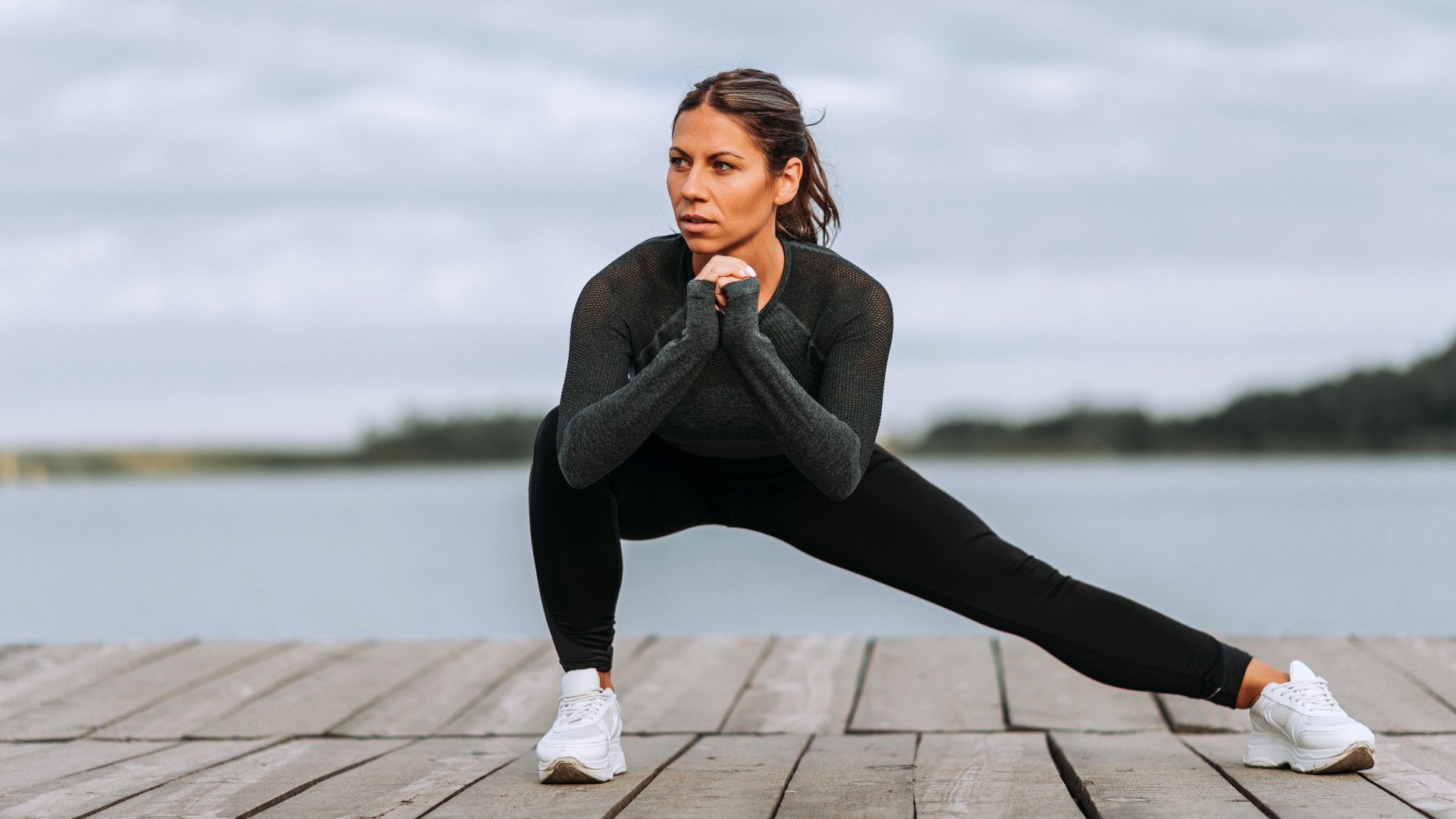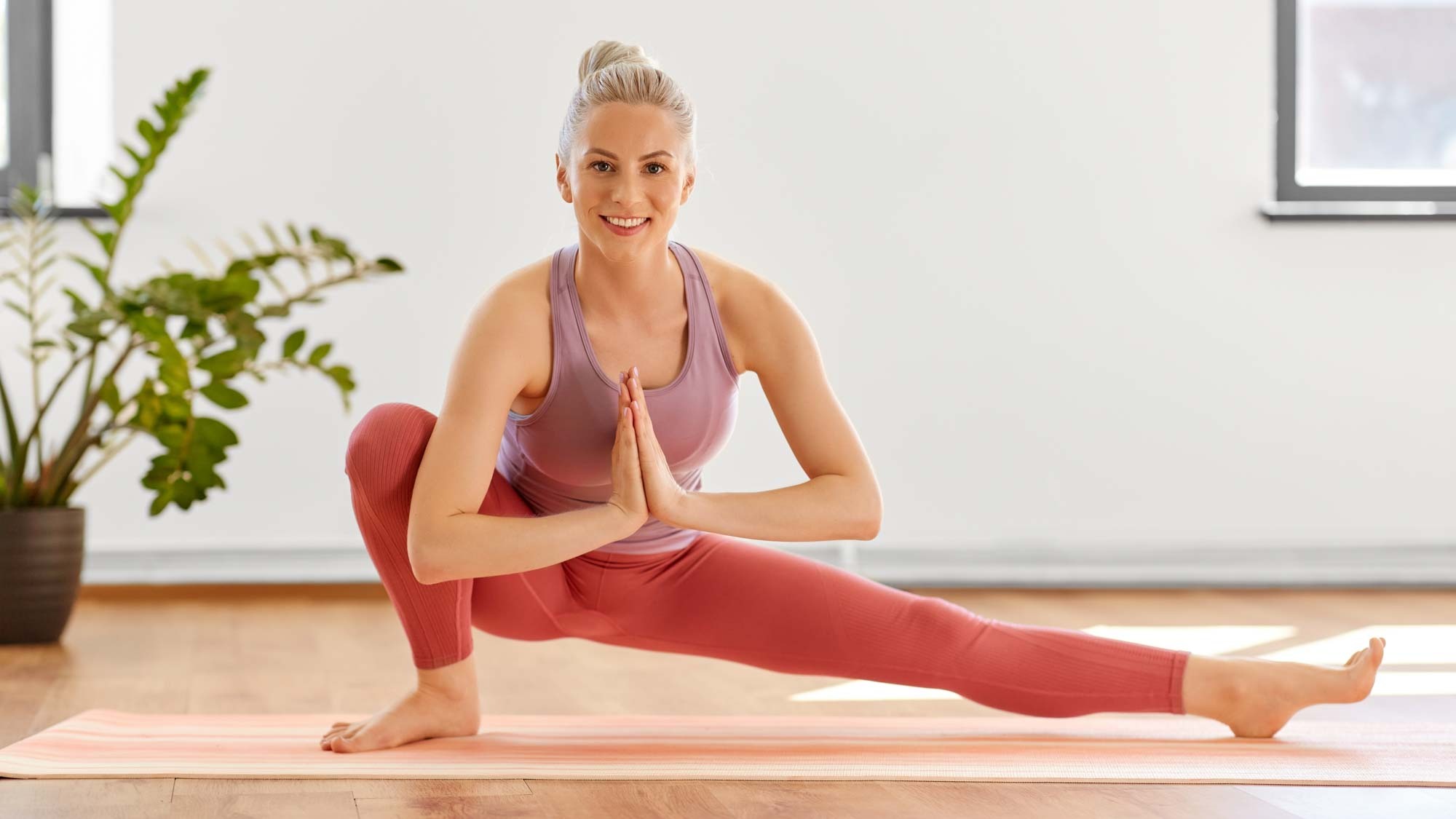
YouTuber and movement advocate Strengthside has garnered millions of followers on his page with physical performance videos. He claims to have unlocked an insane amount of flexibility by practicing this one lower-body exercise twice a week with very little stretching.
If you aim to build leg strength and unlock hip flexibility — try the Cossack squat with weights.
Sure, there’s a time and place for stretches — after your workout, for example — but mobility exercises are the way to go if you want to increase your range of motion and strengthen your joints, bones and muscles.
Don’t believe us? Grab one of the best adjustable dumbbells or a set of kettlebells and check out the video below for implementing this simple hip flexibility hack into your exercise routine.
What are Cossack squats?
The Cossack squat is like a lateral lunge, except you’ll achieve a much deeper sitting position during the squat, which builds flexibility in your hips, knees and ankles. And like many lower body bodyweight exercises, this one targets your quads, outer glutes (the gluteus medius), hamstrings, adductors, core, lower back and calf muscles.
Cossack squats are a standalone strength exercise but can also be used as a warm-up mobility drill during CrossFit workouts or similar to unlock lower body mobility and flexibility. And the yogis are well on top of it as well. Skandasana—half squat pose — is used as a deep hip opener while stretching the inner legs and groin.
How to do Cossack squats

Whether you plan to use the Cossack squat as part of a strength program or a mobility exercise, here’s how to do it with proper form.
Get instant access to breaking news, the hottest reviews, great deals and helpful tips.
- Stand with legs wide and toes pointed forward
- Engage your core. Extend your arms in front of you or bring your hands to your hips or chest
- Bend your left knee and send your weight to the left, lowering into a lunge while straightening your right leg. Lift your right toes upward for external rotation at the hip or forward if you prefer
- Keep your chest lifted, back straight and left heel planted
- Lower your hips as far as you can, sitting your weight into your bum and heel
- Pause, then push explosively through your left heel and repeat on the other side.
Recently, I did 90 Cossack squats every day for a week — here’s what happened to my legs and hips. And spoiler alert, I found it incredibly useful for unlocking my hips and hamstrings in just a week.
What is the Cossack squat with weights drill?
Don’t worry if you can’t get much depth — Cossack squats are accessible for beginners, and you should notice improved flexibility with regular practice.
During his video posted to YouTube, Strengthside claims that when stretching became time-consuming, he chose strength exercises that promote flexibility instead. “For hip opening, I chose the Cossack squat with weights,” he says. “I did this twice a week for over a year, progressively adding more weight.”
But he warns that if you follow suit, don’t progress the weights too quickly. “There’s a Goldilocks zone,” he explains. “Too heavy, and your body will tense up.” Try to gradually increase the weight as your flexibility builds, as the weights will act as a counterbalance and simultaneously help you drop deeper. Moving gradually should also help prevent any muscular injuries.
“And to make them even more efficient for hip opening, I started transitioning from side to side while staying as low as possible,” he adds. You can go for toe down or toe up, depending on which feels better.
If you struggle with ankle mobility, pop a yoga block underneath your hands to elevate your chest or underneath your heel until you feel more comfortable, working one side at a time. When holding weights, we recommend a goblet squat hold technique in front of the chest or the double rack kettlebell position.
Any front-loading position like this works the quads even harder and might help improve posture.
Start with 3 sets of 10 reps — 5 on each side — and work the exercise into your existing routine or as a standalone drill twice a week.
Bottom line
During yoga classes, some practitioners may encourage the heel to lift, transitioning weight onto the ball of your foot, but this could stress your knee joint under additional loading, so try to keep your heel pressed down for this drill.
By practicing regularly, you could increase flexibility in the hamstrings and build range of motion in your hips, knees and ankles; this could translate to better depth during squats and lunges and more powerful leg muscles.
Single-sided exercise also improves balance, coordination and strength. There’s some science to working unilaterally, too. One study has shown that the training style promotes cross-education, whereby muscles stimulate on the opposite side of the body to the ones working. And according to American Bone Health, weight-bearing strength exercises promote bone loading, building stronger bones.
If you’re new to Cossack squats, try lateral lunges to ease you in first and give these mobility exercises for hip flexor pain a try before you start to help you drop deeper.
More from Tom's Guide
- Forget sit-ups, this 3-move ab workout chisels concrete core muscles in just 15 minutes
- Dolphin planks: How to do them and 3 variations to build steel core muscles
- I walked 11,000 steps with the Apple Watch Ultra 2 and the Apple Watch series 9, and the results are confusing.

Sam Hopes is a level 3 qualified trainer, a level 2 Reiki practitioner and fitness editor at Tom's Guide. She is also currently undertaking her Yoga For Athletes training course.
Sam has written for various fitness brands and websites over the years and has experience across brands at Future, such as Live Science, Fit&Well, Coach, and T3.
Having coached at fitness studios like F45 and Virgin Active and personal trained, Sam now primarily teaches outdoor bootcamps, bodyweight, calisthenics and kettlebells.
She also coaches mobility and flexibility classes several times a week and believes that true strength comes from a holistic approach to training your body.
Sam has completed two mixed doubles Hyrox competitions in London and the Netherlands and finished her first doubles attempt in 1:11.

